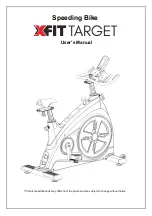
34
Reprocessing
Příprava
Aufbereitung
Den Arbeitskanal durchspülen, um Antrocknungen
zu vermeiden.
1
HINWEIS:
Stoßende und ziehende
Bewegungen vermeiden, um den Schaft
nicht zu beschädigen.
1
HINWEIS:
Keine Desinfektionsmittel zur
Vorreinigung benutzen, diese führen zur
Fixierung von Eiweißen und organischen
Rückständen.
14.3 Dichtheitstest
1
HINWEIS:
Die Gummidichtung im
Anschlussadapter des Dichtheitstesters
muss regelmäßig mit Instrumentenöl
behandelt werden.
14.3.1
Phase 1: Durchführung des
Dichtheitstests — trocken
Der Anschlussschlauch des Dichtheitstesters und
der Entlüftungsanschluss am Endoskop müssen
trocken sein.
1. Den Adapter des Dichtheitstesters fest auf den
Entlüftungsstutzen des Produkts stecken und
mit Hilfe des Bajonettverschlusses arretieren.
2. Mit dem Dichtheitstester Luft in das Produkt
pumpen, bis ein Druck von 160 – 180 mmHg
(blauer Bereich) erreicht ist.
Der Abwinklungsgummi am distalen Ende kann
sich leicht ausdehnen, während die Luft in das
Produkt gepumpt wird.
3. Das distale Ende über die
Abwinklungsmechanik am Kontrollkörper des
Produkts in sämtliche Richtungen bis zum
Anschlag bewegen und dabei die Druckanzeige
des Dichtheitstesters beobachten.
Der Luftdruck im Produkt kann beim Bewegen
des distalen Endes um bis zu 10 mmHg fallen.
Rinse out the working channel in order to prevent
drying.
1
NOTE:
To avoid damaging the sheath, do
not use pushing and pulling movements.
1
NOTE:
Do not use disinfectants for
precleaning; these cause fixation of
proteins and organic residues.
14.3
Leakage test
1
NOTE:
The rubber seal in the connection
adaptor of the leakage tester should be
treated regularly with instrument oil.
14.3.1
Phase 1: Performing the leakage
test – dry
The connection tube of the leakage tester and the
vent port on the endoscope must be dry.
1. Attach the adaptor of the leakage tester
securely to the product’s vent port and lock
in place using the bayonet mount.
2. Using the leakage tester, pump air into the
product until a pressure of 160 – 180 mmHg
(blue area) is reached.
The angled rubber at the distal end can
easily expand while the air is pumped into
the product.
3. Using the angling mechanism, move the
distal end on the product’s control body in all
directions as far as possible while observing
the pressure display of the leakage tester.
The air pressure in the product can drop by up
to 10 mmHg when moving the distal end.
Propláchněte pracovní kanálek, abyste zabránili
naschnutí.
1
UPOZORNĚNÍ:
Vyhněte se rázovým
a tahovým pohybům, abyste násadec
nepoškodili.
1
UPOZORNĚNÍ:
Nepoužívejte dezinfekční
prostředky k předčištění, vedou k fixaci
proteinů a organických zbytků.
14.3
Test těsnosti
1
UPOZORNĚNÍ:
Pryžové těsnění
v adaptéru přípojky měřiče těsnosti musí
být pravidelně ošetřeno olejem na nástroje.
14.3.1
Fáze 1: Provádění testu
těsnosti – nasucho
Připojovací hadice měřiče těsnosti a odvzdušňovací
přípojka endoskopu musí být suché.
1.
Adaptér měřiče těsnosti pevně nasaďte na
odvzdušňovací hrdlo výrobku a zajistěte jej
pomocí bajonetového uzávěru.
2.
Měřičem těsnosti do výrobku načerpejte
vzduch, dokud není dosaženo tlaku 160 –
180 mmHg (modrá oblast).
Zatímco je do výrobku čerpán vzduch, lze
gumu na distálním konci snadno roztáhnout.
3.
S distálním koncem pohybujte pomocí ohýbací
mechaniky na ovládací rukojeti výrobku do
všech směrů až k dorazu a přitom sledujte
indikaci tlaku měřiče těsnosti.
Tlak vzduchu ve výrobku může při pohybování
s distálním koncem poklesnout až o 10 mmHg.
















































